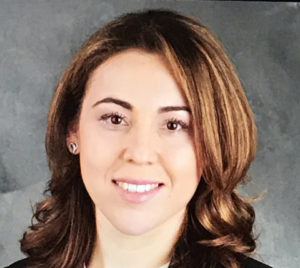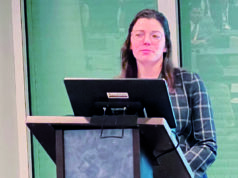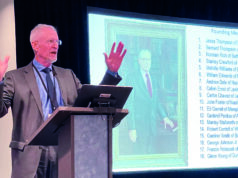
Gender-based differences driving career dissatisfaction and burnout exist, viewers of the SVS ONLINE (June 20–July 2) virtual conference heard during the William J. von Liebig Forum, the first scientific session, held on opening day. And an “alarming rate of suicidal ideation amongst women” warrants urgent intervention to identify and support those at risk, presenting author Laura Marie Drudi, MD, a vascular surgery resident at McGill University in Montreal, informed attendees.
“The prevalence of burnout among vascular surgeons is high,” she said. Indeed, work-related pain is a significant factor for both men and women, and programs that help mitigate pain in surgeons should be helpful to all vascular surgeons, Drudi went on to state.
She was presenting evidence from a study entitled, “Predictors and sequela of burnout amongst practicing American vascular surgeons: A gender-based analysis, on behalf of the SVS Wellness Task Force”—an initiative set up by the Society in 2017 in response to an apparent high risk for burnout in the vascular surgery specialty.
“Burnout is a mental state characterized by emotional exhaustion, depersonalization and a diminished sense of personal accomplishment,” Drudi said. “The epidemic of physician burnout has reached sobering levels, and, as a specialty, vascular surgeons appear to be at high risk for occupational burnout.”
Drudi et al cited as a backdrop the one-third of practicing vascular surgeons who self-report burnout and depression. Their study sought to identify gender-specific predictors for burnout to guide future interventions.
During 2018, active SVS members were surveyed confidentially using the Maslach Burnout Index. This was embedded in a questionnaire that captured demographic and practice-related characteristics, with results stratified by gender, Drudi explained. Univariate and multivariate logistic regression models were developed to identify predictors for the endpoints of burnout and suicidal ideation.
The survey had an overall response rate of 34.3% of practicing vascular surgeons. A higher percentage of women responded (19%) than comprise SVS membership (13.7%), the researchers found.
Key results included: Women respondents were significantly younger (42.6 vs. 51.4 years old; p <.0001), with fewer years in practice (7.9 vs. 17.5; p<.0001), were less likely to be in private practice (29.9% vs. 43.7%; p <.005), be married/partnered (71.3% vs. 90.6% p<.0001) or have children (52.2 vs. 90.3%; p<.0001).
While the prevalence of burnout was similar for women and men (42.3% and 40.9% (NS)), the investigators said, the prevalence of suicidal ideation was significantly higher in women (12.9% vs. 6.6%; p<.007).
“While there was no difference in mean hours worked or call taken, women were more likely to have had a recent conflict between work and home responsibilities (68.5% vs. 57.4%; p<.01) and to have resolved this conflict in favor of work (57.5 vs 42.8%; p <.005),” Drudi noted.
“Women spent more time working at home on EMR [electronic medical record] (6.4 vs. 4.7 hours; p<.0001) or other work-related tasks (6.5 vs. 5.4 hrs; p<.05); however, men were more likely to be very dissatisfied with their EMR (23.0 vs. 11.2%; p<.05). Although men and women had the same incidence of reported recent medical errors, women were less likely to self-report a recent malpractice suit (10.5 vs. 20.3%; p<.005) or to feel that a fair resolution was reached (57.3 vs. 93.3%; p <.05).
“There was no gender difference in reported work-related pain. Multivariate analysis revealed work-related pain as an independent predictor for burnout and SI for the entire cohort, and work/life imbalance as an independent predictor for burnout. EMR dissatisfaction was an additional burnout predictor in men.”









